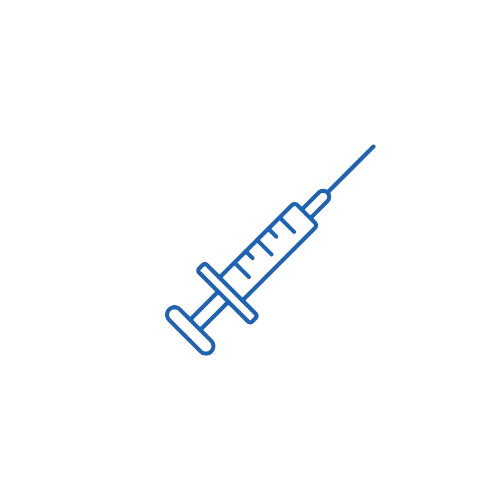Furosemide
Allopathic
Medicines List
All MedicineIndications
Furosemide is a potent loop diuretic used to manage fluid overload and hypertension.
Approved Indications:
- Edema: Associated with congestive heart failure (CHF), liver cirrhosis, nephrotic syndrome, and renal disease, including chronic kidney disease (CKD).
- Hypertension: For patients with mild, moderate, or severe hypertension, especially when associated with edema.
- Acute Pulmonary Edema: Rapid relief of fluid accumulation in the lungs due to heart failure.
- Hypercalcemia: Management of symptomatic hypercalcemia as part of fluid and electrolyte correction.
Off-label / Clinically Accepted Uses:
- Acute renal failure (oliguric phase) in combination with other therapies to promote diuresis.
- Ascites in refractory liver disease, in combination with other diuretics.
Dosage & Administration
Adults:
- Edema (Oral): 20–80 mg per day in single or divided doses; may increase by 20–40 mg increments every 6–8 hours if needed.
- Edema (IV/IM): 20–40 mg; may repeat every 2 hours until desired effect.
- Hypertension: 40 mg twice daily, adjust based on response.
Pediatrics:
- Oral/IV: 1–2 mg/kg/dose; maximum 6 mg/kg/day, divided as needed.
Special Populations:
- Renal Impairment: Higher doses may be required in severe renal dysfunction.
- Hepatic Impairment: Use with caution due to risk of fluid and electrolyte imbalance.
- Elderly: Start at lower doses and titrate carefully due to increased sensitivity and risk of dehydration.
Administration Routes:
- Oral, intravenous (IV), or intramuscular (IM). IV route preferred in acute cases.
Mechanism of Action (MOA)
Furosemide inhibits the Na⁺-K⁺-2Cl⁻ symporter in the thick ascending loop of Henle in the nephron. By blocking sodium, potassium, and chloride reabsorption, it increases osmotic water excretion, leading to diuresis. This reduces plasma and extracellular fluid volume, decreases venous return, lowers pulmonary and systemic congestion, and reduces blood pressure. Additionally, furosemide enhances renal calcium excretion, contributing to its effect in hypercalcemia.
Pharmacokinetics
- Absorption: Rapidly absorbed orally with bioavailability of 60–70%; onset 30–60 minutes (oral), 5 minutes (IV).
- Distribution: Widely distributed; 95% protein-bound in plasma.
- Metabolism: Minimal hepatic metabolism; mostly excreted unchanged.
- Half-life: 1–2 hours (oral), may be prolonged in renal impairment.
- Elimination: Primarily renal via glomerular filtration and tubular secretion; minor fecal excretion.
- Onset of Action: Oral 30–60 minutes, peak effect 1–2 hours; IV 5 minutes, peak 30 minutes; duration 6–8 hours (oral), 2 hours (IV).
Pregnancy Category & Lactation
- Pregnancy: FDA Category C; use only if potential benefits outweigh risks. Risk of maternal electrolyte disturbances may affect fetal development.
- Lactation: Excreted in breast milk; caution advised, especially in premature infants or those with renal impairment.
Therapeutic Class
- Primary Class: Diuretic
- Subclass: Loop diuretic
Contraindications
- Known hypersensitivity to furosemide or sulfonamides
- Anuria or severe renal failure without dialysis
- Hypovolemia or electrolyte depletion without correction
- Hepatic coma or severe liver disease (unless fluid overload present)
Warnings & Precautions
- Electrolyte Imbalances: Monitor potassium, sodium, magnesium, calcium.
- Hypotension & Dehydration: Risk increased in elderly or volume-depleted patients.
- Renal Function: Monitor serum creatinine and urine output; risk of acute renal failure in over-diuresis.
- Ototoxicity: High IV doses may cause transient or permanent hearing loss.
- Hyperuricemia: May precipitate gout attacks; monitor uric acid levels in predisposed patients.
Side Effects
Common:
- Polyuria, nocturia
- Dizziness, hypotension
- Headache
- Gastrointestinal upset (nausea, diarrhea)
Serious / Rare:
- Electrolyte disturbances: hypokalemia, hyponatremia, hypomagnesemia
- Ototoxicity, tinnitus
- Hyperglycemia
- Severe dehydration or hypotension
- Allergic reactions (rash, anaphylaxis in sulfonamide-sensitive patients)
Timing & Dose Dependence:
- Electrolyte imbalances and hypotension are dose-dependent; onset within hours of administration.
Drug Interactions
- ACE inhibitors / ARBs: May potentiate hypotension and hyperkalemia.
- Aminoglycosides / Cisplatin: Increased risk of ototoxicity.
- Lithium: Risk of lithium toxicity due to reduced renal clearance.
- NSAIDs: May reduce diuretic efficacy by decreasing renal prostaglandins.
- Other Antihypertensives: Additive hypotensive effects.
Recent Updates or Guidelines
- Current guidelines recommend furosemide as first-line therapy for acute decompensated heart failure with volume overload.
- Emphasis on monitoring electrolytes and renal function in hospitalized patients.
- Recommended in combination with thiazide diuretics for resistant edema.
Storage Conditions
- Store at 20°C to 25°C, away from moisture and light.
- Protect from freezing.
- Keep in tightly closed container.
- Oral solution: discard after 2 weeks once opened.


